- Share
- Share on Facebook
- Share on X
- Share on LinkedIn

Bubbles are ubiquitous in many research applications, from ultrasound imaging to understanding volcanic eruptions. They are also excellent acoustic resonators, being very small in size compared to the wavelength of the sound they emit. These resonant sound waves contain information about the mechanical properties of materials in the immediate vicinity of the bubble. In a recent publication in Nature Communications, a collaboration between LIPhy's Optima and Move teams proposes to exploit this phenomenon to image a sample by moving a bubble in its vicinity.

Publication
Scrutinizing the skeleton of our cells, an essential issue for health
On November 28, 2024
By combining a numerical modeling approach with experiments in both structural and cellular biology, the APERTuRe project has led to a better understanding of the dynamics of a protein network in the cytoplasm of our cells. These results could prove useful in the development of new drugs.

A Franco-American collaboration has demonstrated that in the microcirculatory network, some red blood cells can take unexpected routes to get from one point to another. This experimental observation should lead to more precise modeling of the mechanisms of oxygenation and elimination of the residues of cellular activity within the blood network.


In an article published in Nature Microbiology, scientists have deciphered the rapid gliding strategy of the parasitic microbe Toxoplasma gondii within the host organism's tissues. They show how the parasite is able to hold on tightly enough without sticking to its substrate to glide efficiently. By explaining how a minimal adhesion system is able to generate rapid movement within complex microenvironments, they open up perspectives for other models of cellular interactions.

Through six talks by Laura Schaedel (Saarbrücken), Atef Asnacios, Marc Durand, Jonathan Fouchard (Paris), Angélique Stéphanou and Philippe Marmottant (Grenoble), we will consider the dynamics of living matter from the molecular scale of the cytoskeleton up to an entire organsim, in systems ranging from tumours to plants and with both experimental and numerical approaches.

While this dimer is one of the simplest molecular complexes, it is also one of the most fragile. Its detection at room temperature took the community by surprise.

Publication
Towards the ultimate precision limits: how information bounds estimation
On September 13, 2024
In this month’s issue of Nature Physics, Dorian Bouchet proposes a popular science article about the Fisher information. This quantity, which is a cornerstone in statistical estimation theory, also emerges an an important quantity in different areas of physics.

Emmanuel Siéfert, who joined LIPhy this year as a CNRS research fellow, has just been awarded a “Starting” grant from the European Research Council (ERC), which provides substantial funding for projects by young researchers.

Scientists at LIPhy have demonstrated the existence of a behavioral transition when the environment of zebrafish becomes too crowded, showing the extent to which the collective school structure resists the structural complexity of the surrounding environment.

An artificial pancreas
On July 2, 2024
A new implantable pancreatic bioreactor device has been developed by the SyNaBi team in the TIMC laboratory (Translational Innovation in Medicine and Complexity), in collaboration with Grenoble Alpes University Hospital and the LIPhy (3D printing) and LBFA (Laboratory of Fundamental and Applied Bioenergetics) laboratories.

Matostheque
On July 2, 2024
The "matostheque" is an online tool for reserving small items of materials. Materials owners add the characteristics and availability of their material to the database. Users can then make a loan request, specifying the dates.

Summer school
School Mecabio: Quantitative and predictive approaches in biomechanics and mechanobiology for health
From June 2, 2024 to June 7, 2024

The study and understanding of the collective movement of animals is a topic of interdisciplinary interest that has long attracted the attention of many scientists (in statistical physics, hydrodynamics, ethology, biology, sociology, and now even in the strongly emergent field of robotics).
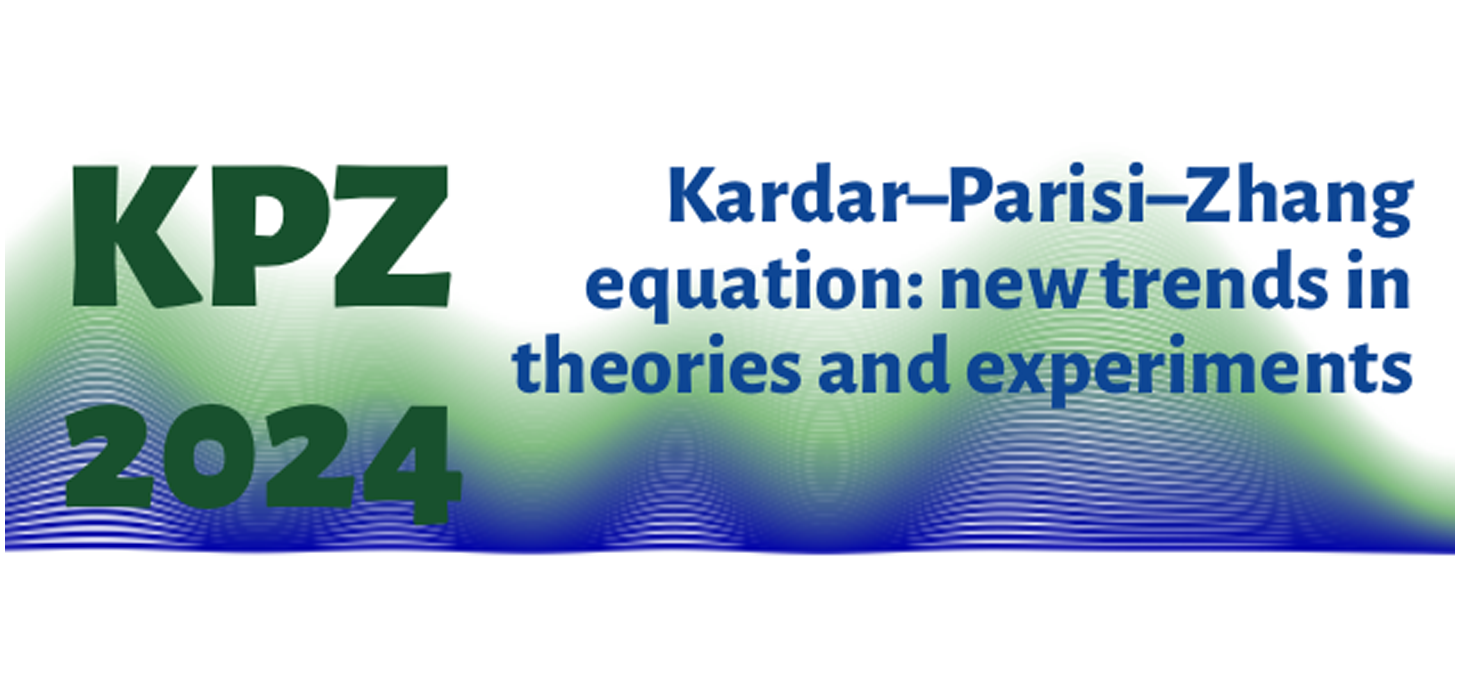
Summer school
School “Kardar–Parisi–Zhang equation: new trends in theories and experiments”
From April 14, 2024 to April 26, 2024
The School "Kardar–Parisi–Zhang equation: new trends in theories and experiments" will be held in École de Physique des Houches, 14-26 April 2024.

Workshop
EverEvol - Population dynamics: from rare events to evolution
From December 13, 2023 to December 15, 2023
Population dynamics used in large-deviation theory are in correspondence with models of biological phenomena in genetics and ecology.

An international team has shown that the’ buckling instability of’a layer of lipids deposited on the surface of’a microbubble produces a propulsion force that can lead to displacements of the order of m/s, of the’, a promising discovery for applications in the medical field.

In hydrodynamics, a lift phenomenon arises when a force acts on an object perpendicularly to its initial motion. In everyday life, we are familiar with this effect allowing for instance planes to take off or soccer balls to follow bent trajectories.

Thanks to 3D-printed cages, we've shown that bubbles can be stabilized in water in any shape: cubes, spheres, even rings. Here, we're printing a large number of 2cm ring bubbles, arranged on a large circle to create an acoustic tokamak.
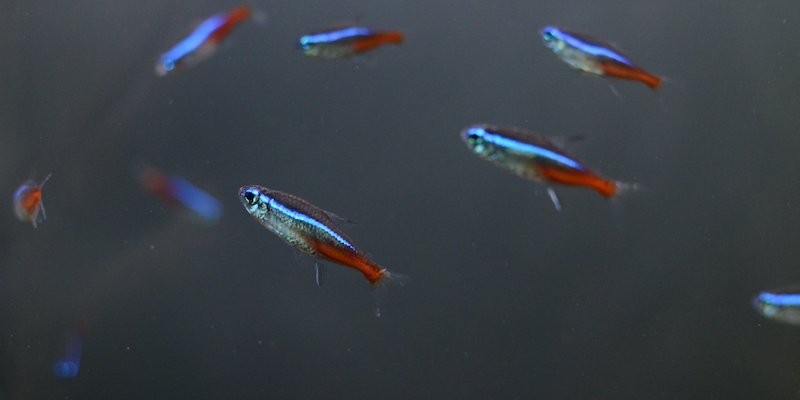
Les mouvements de foule sont observés chez différentes espèces et à différentes échelles, des insectes aux mammifères, ainsi que dans des systèmes non cognitifs, tels que les cellules motiles.

The first kaleidoscope was made in the early 1800s by Sir David Brewster, who was seduced by the beauty of the patterns generated, both symmetrical and very complex. In a recent study carried out within the Grenoble Interdisciplinary Physics Laboratory (LIPhy - CNRS/UGA) and published in PNAS, scientists demonstrate that the kaleidoscopic effect, beyond its artistic function, can be usefully exploited by scientists. working with fiber optics.

Misaki Ozawa in the PSM team at LIPhy received a junior chair from Multidisciplinary Institute in Artificial Intelligence (MIAI), including a funding for a three-year postdoc.

The action potential, which is the principle electrical signal that carries the information in the brain, initiates in the axon initial segment.

Publication
Influence of storage and buffer composition on the mechanical behavior of flowing red blood cells
On March 10, 2023
Eight laboratories of the Mécabio Santé research group have shared their know-how and methods to study the influence of the storage and preparation of blood samples on the mechanical behavior of red blood cells. Published in the Biophysical Journal, this work has led to new recommendations to standardize practices and facilitate the comparability of measurements between laboratories.
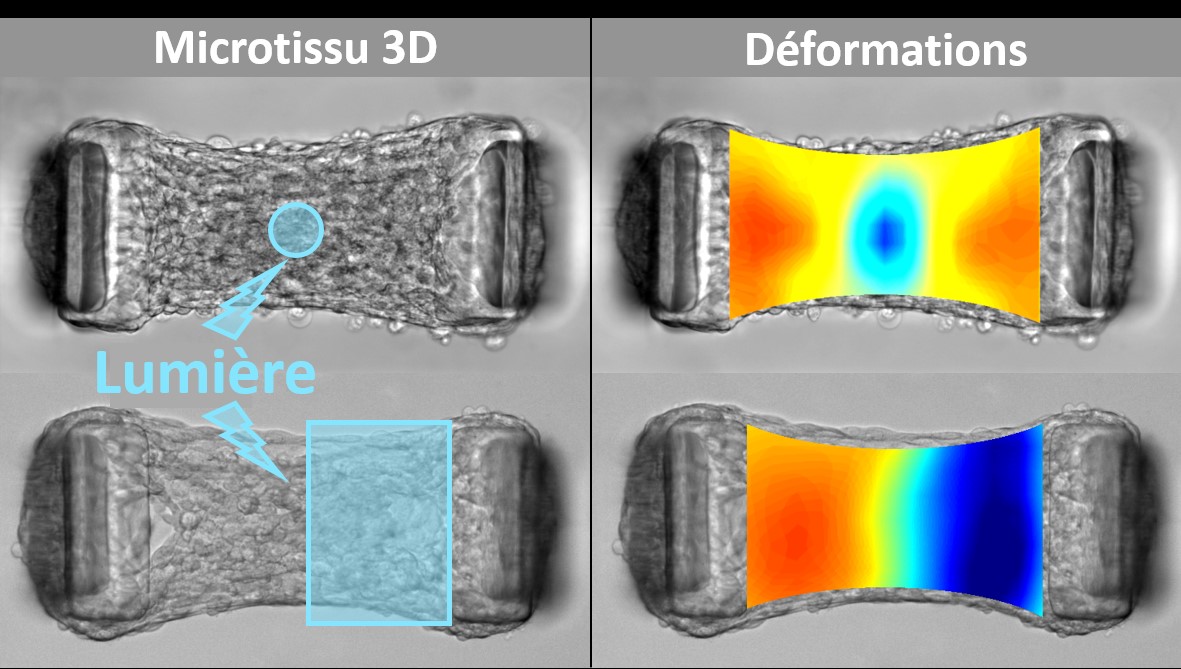
Publication
Probe the mechanics of biological tissues using their own cells as actuators
On February 28, 2023
By combining tissue engineering and optogenetics, biophysicists have transformed cells into biological microactuators in order to study the spatio-temporal propagation of mechanical signals in biological tissues and to characterize the architecture and viscoelastic properties of these tissues.
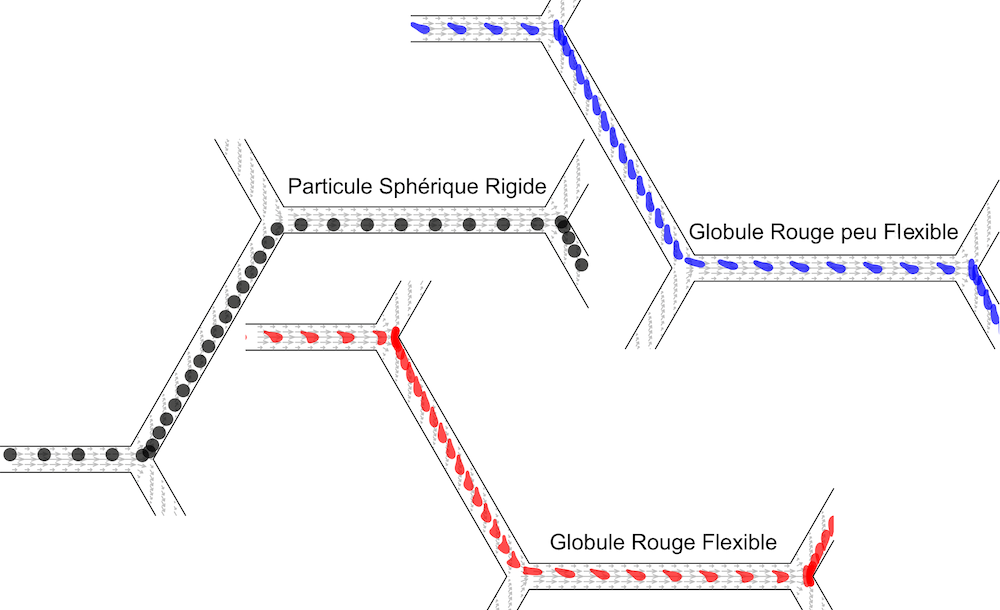
Researchers have shown that the deformability of red blood cells is an essential ingredient for their homogeneous diffusion in the terminal network of blood vessels, when the diameter of the vessels is only slightly larger than the size of the cells.
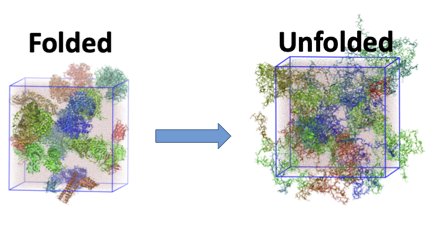
Organisms have adapted to thrive in a narrow, well-defined temperature range. Humans are comfortable in ambient conditions, but other organisms can withstand much higher temperatures, even above the boiling temperature of water. How temperature kills a cell is not completely understood, but it is crucial in many ways. For example, to understand how life evolved on our planet, and how it can potentially develop elsewhere. We also need to consider how even small changes in temperature in the environment due to climate issues can throw the current distribution of living organisms out of balance. Finally, how therapeutic approaches can be optimized to kill cancer cells by locally increasing the temperature of the cells.

Accolade/Award
Nicolas Cuny receives the 2022 Thesis Prize of the French Rheology Group
On December 16, 2022
The 2022 thesis prize of the French Group of Rheology has been awarded to Nicolas Cuny for his thesis entitled "Derivation of constitutive models: from the microstructure to the rheology of soft dense suspensions" carried out at LIPhy and supervised by Romain Mari and Eric Bertin.
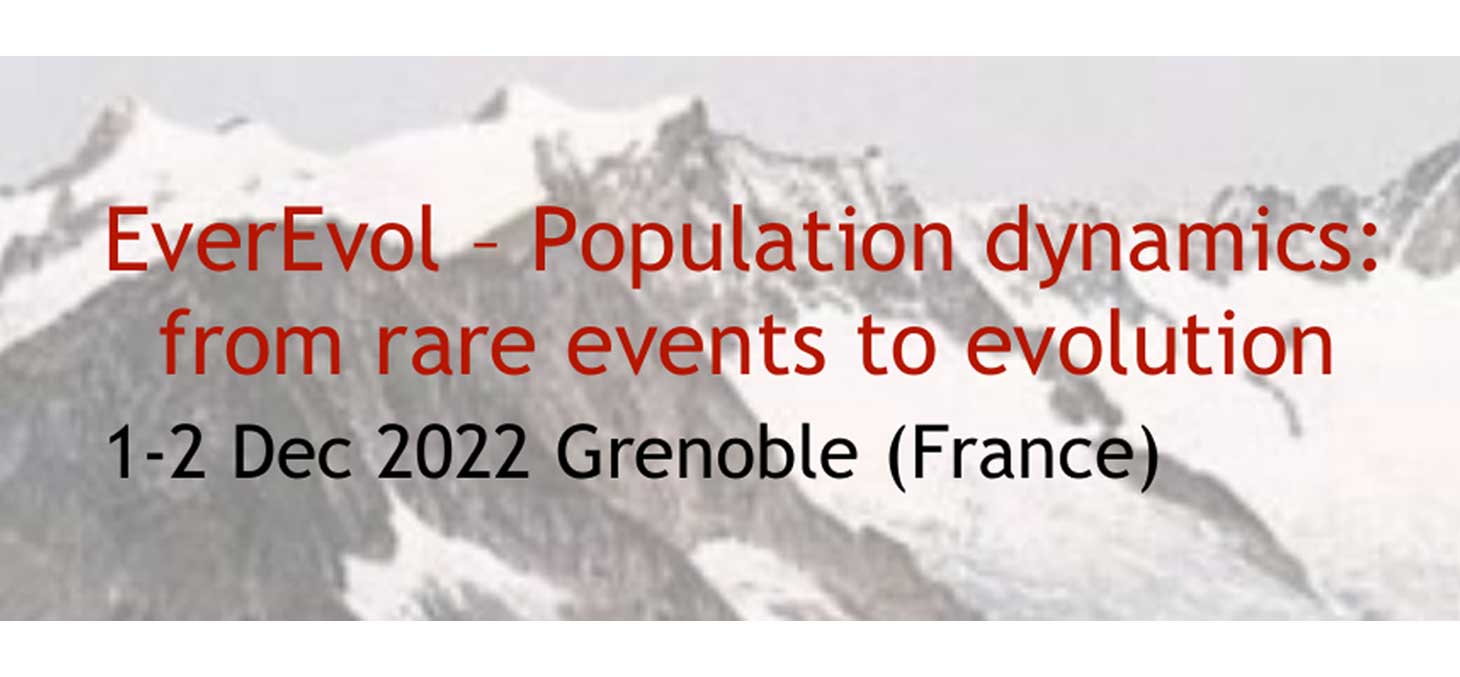
Workshop
Population dynamics: from rare events to evolution
From December 1, 2022 to December 2, 2022
Rare events are by definition difficult to observe, and their numerical study is all the more complex. A class of methods, "population dynamics algorithms" allowed progress in this area.

Workshop
Interaction, Disorder, Elasticity
From November 28, 2022 to November 30, 2022
Saint-Martin-d'Hères - Domaine universitaire
The first GDR IDE Days "Interaction Disorder Elasticity" will be held on the UGA campus.

Parabolic flights for the study of blood microcirculation.
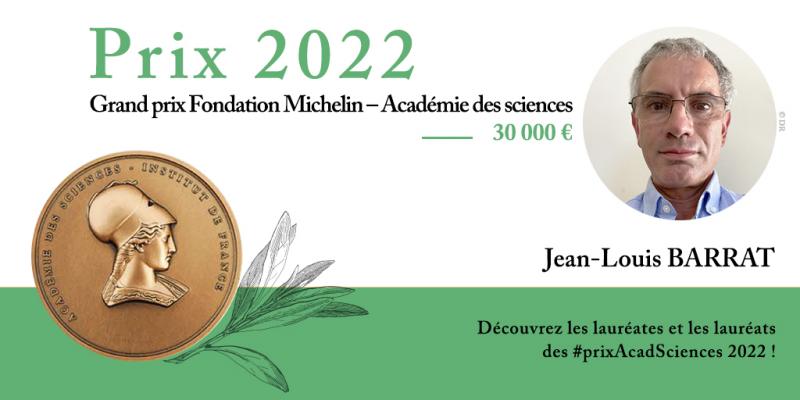
Accolade/Award
The Michelin Foundation Gran prize of Academy of Sciences 2022 is awarded to Jean-Louis BARRAT.
On October 19, 2022
Researcher of the PSM team at LIphy, professor at the University of Grenoble Alpes. See you on November 22 for the awarding of his prize.

Drought is a threat for plants, as it induces gaseous embolisms which can block the circulation of sap in their veins. Recent images at the scale of single leaves have revealed that such embolisms do not invade the vein network smoothly, but rather by intermittent puffs.

Water bubbles have a very sharp acoustic resonance frequency, as evidenced by the sound of bubbling produced in a glass when blowing through a straw. But does this resonance depend on the shape of the bubbles? Although bubbles are most often spherical, they can also be toroidal, like those produced by dolphins in their water games, which are the equivalent of our smoke rings.

L'école d'été Active Matter and Complex Media aura lieu à l'Institut d'études scientifiques de Cargèse (Corse).

Elisabeth Charlaix, CNRS Silver Medal 2009, Professor at the University of Grenoble Alpes, conducting research at the Interdisciplinary Laboratory of Physics (LIPhy, CNRS/UGA), is the winner of the prestigious "Fluid dynamics prize recipient" of the American physical society (APS) which rewards outstanding achievements in the field of fluid dynamics research.

Blue energy from the difference in salinity between fresh river water and salt ocean water is an avenue to explore for the energy transition thanks to the contributions of fundamental research on nanomaterials.

The migration of cells in 3D media is a complex process and plays a key role in the development of cancers. During metastasis, cancer cells develop a strategy and a mode of migration adapted to their environment to invade other tissues. In this study, we analyzed the migration of cancer cells with different metastatic potentials in various collagen matrices.

Researchers have devised an optical architecture to calculate the correlation of radio signals in an analog way. This operation would make it possible to locate radio transmitters with precision, or to improve the performance of optical interferometry in astronomy.
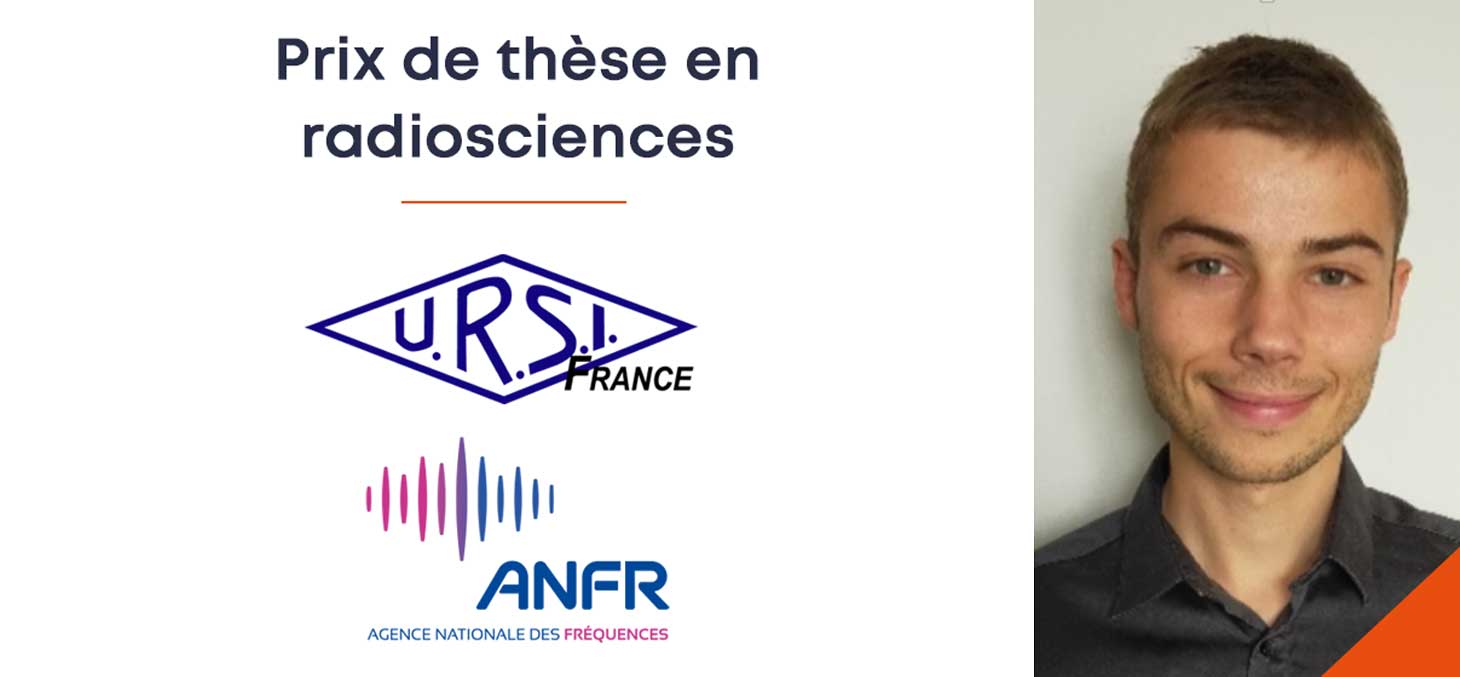
Congratulations to Guillaume Godefroy, winner of the 2022 Thesis Prize in radioscience. His thesis: "New approaches for photoacoustic imaging of blood vessels: quantitative 3D imaging of fluctuations and reconstruction assisted by deep learning", defended on October 12, 2021.

Publication
Combine fluorescence fluctuations and photobleaching to quantify surface density
On May 9, 2022
Fluorescence Fluctuation Spectroscopy (FFS) is a widespread technique used to evaluate densities or concentrations of molecules, aggregates or particles in biological environments (cells, solutions, surfaces). In reality, when the species of interest are not uniformly fluorescently labeled, these techniques do not give quantitative results.

The laboratory's mechanics platform has been asked to shape snow corers for the Centre National de Recherches Météorologiques.

Photoactivatable ion channel toxins derived from animal venoms provide the opportunity to control the activity of excitable cells with high spatiotemporal precision.

Publication
Relating rheology to microstructure dynamics in dense suspensions of soft particles
On February 6, 2022
Dense suspensions of soft particles possess relatively complex rheological properties, such as the existence of a threshold stress to flow. A new statistical physics approach allows to obtain a tensor constitutive model from the dynamics of the soft particles of the suspension, and thus to link the rheology to the anisotropy of the microstructure.
- Share
- Share on Facebook
- Share on X
- Share on LinkedIn